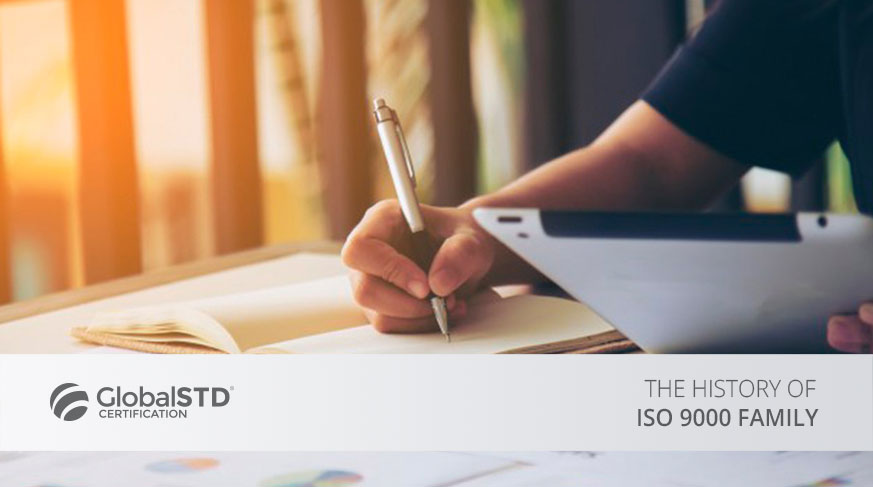
THE HISTORY OF ISO 9000 FAMILY
The preparation work of some international standards is made through technical committees of ISO (The International Organization for Standardization) that is the World Federation of National Bodies of Standardization.
There are technical committees that vote to prepare and approve international standards. The international standard requires the approval of at list 75% of members with the right to vote. ISO 9000 was prepared by the Technical Committee ISO/TC 176 Management and Quality Assurance, subcommittee SC 1, concepts, and terminology.
The beginning of standardization started at the end of the XIX century with the Industrial Revolution due to the need to produce more and better. The biggest boost started in the first world war since the army needed armory, so private institutions intervened, and mandatory interchangeability and accurate changes were requested.
On December 22nd, 1917, the German engineer Naubus and Hellmich created the first organism working with standards: the German Industry Standards Committee (NADI); this organization started to issue standards under the acronym: NADI meaning (the German Industry Standard). In 1926, NADI changed its name to DNA: German Standards Committee.
Rapidly started other national committees in industrial countries like France and England. When these national bodies of standardization appeared, the need to coordinate their work and experiences started, having this in mind, in London 1926 was created the National Standardizing Association (ISA), later replaced by the International Organization for Standardization (ISO) at Ginevra which depends on the ONU.
The first standard in ISO 9001 family is ISO 9001, Quality Management Systems and Requirements, created to help all types of organizations to implement and operate efficient systems of quality management. However, in 1994, ISO 9001 was managed by organizations working with the production process, therefore, the implementation of this standard in service companies was very difficult; then a review made in 2000 got a suitable standard for all types of organizations, applicable to service companies and even public administration. Then, two other reviews were conducted in 2008 and a valid version was issued in 2015.
ISO 9000 family currently formed by:
ISO 9000:2015
Describes fundaments of the quality management system and specifies its terminology.
ISO 9001:2015
States the requirements for quality management systems applicable to an organization that needs to demonstrate their capacity to provide products complying with the client’s requirements and regulations applicable to it, to increase the client’s satisfaction.
ISO 9004:2009
Provides guidelines that consider efficiency and effectiveness in the Quality Management System. The objective of this standard is to improve the organization’s performance, client satisfaction, and other interested parties.
ISO 19011:2011
Provides training for environment and quality management system audits. These are part of a coherent set of standards of Quality Management System facilitating mutual comprehension in national and international trade. Its application leads companies that aiming to:
- Have the advantages of a quality management system implementation.
- To trust on suppliers and its requirements to produce satisfaction.
- Users of its products.
- Have people interested in a mutual understanding of the terminology of quality management (for example suppliers, clients, and regulatory bodies).
- Have people that evaluates or audits quality management systems.
- Advise those who provide information about the quality management system.
- Have experts who develop related standards.
There are a lot more companies that had implemented certifications with the ISO 9001 family. ISO 9001 is at the top of certifications rank with 103, 3936 certified companies under this standard in 2015. China is the country with the greater number of certifications with 29% after Italy and Germany. Mexico is in the 30th position of this list with 75000 certified companies, this means we still have a long way to go, encouraging the culture of quality in services and products.
